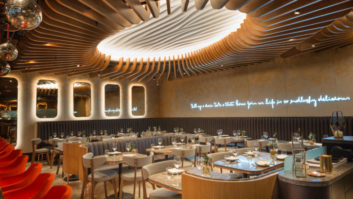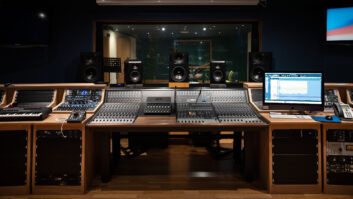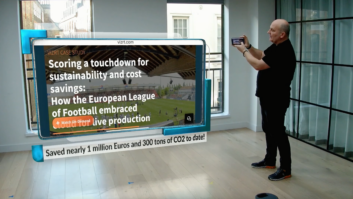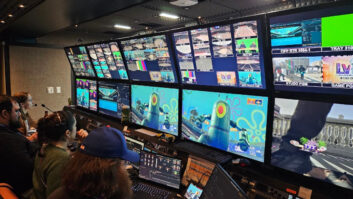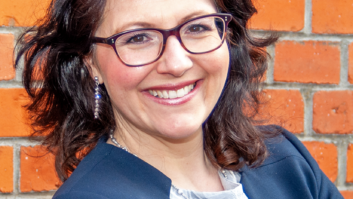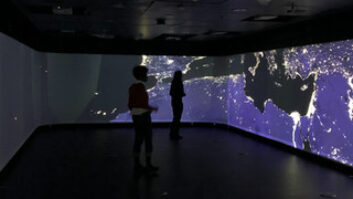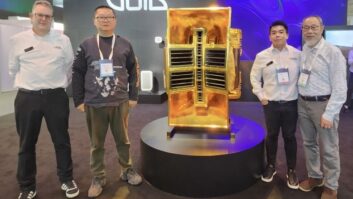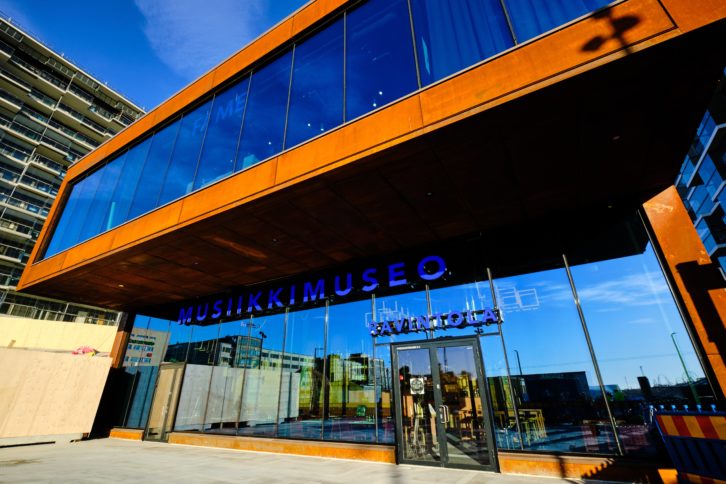
Sibelius will be pleased. When Finnish pro audio loudspeaker expert Genelec selected the newly opened Finnish Music Hall of Fame in Helsinki as the venue for the official launch of its technology platform Smart IP, all the right notes were in the right order. The museum hosts events and dinners; its interactive displays provide the perfect showcase for Finland’s rich musical heritage; and Genelec’s new 4430A speakers have been installed – all 124 of them – to deliver virtual and augmented reality experiences and more, via Smart IP, to something like 100,000 visitors each year.
As Scandinavia’s largest entertainment technology conglomerate, the Bright Group includes installation and integration services alongside just about everything else. Its head of installation is Santtu Sipilä, who oversaw the lengthy project at the Finnish Music Hall of Fame working alongside Genelec and his colleague, project designer Janne Sivonen. In the official release, Sipilä sums up the breakthrough that Smart IP represents with the following words: “When Smart IP was announced we knew instantly that it offered the perfect solution for the Hall of Fame. We were already familiar with Genelec’s outstanding audio quality and long-term reliability, so to be able to integrate every 4430 into the system via a single CAT cable made the whole process of installation and configuration incredibly straightforward, while providing us with amazing levels of control.”
The single CAT cable is at the heart of it. Power, audio and control are all combined, meaning Dante and AES67 audio, Power-over-Ethernet and data from Genelec’s new software package Smart IP Manager – alongside interfaces for Dante Controller and Dante Domain Manager. “It’s the same speaker as the 4030 Series,” explains Sivonen, “but the technology that we’re using to feed them is different. It certainly makes our job easier, because we don’t have to connect analogue or AES/EBU cabling to every speaker.”
Virtual acoustics
The introduction of Smart IP streamlines several exotic possibilities of AoIP, including virtual and augmented acoustics and immersive audio. “We’ve already modelled the room in d&b audiotechnik’s ArrayCalc software and we’re running the d&b Soundscape processor,” reveals Sivonen. “For this we used a similar 4in speaker from d&b. We had to put some amplifier channels into the model to get the system working, but the system is agnostic to the fact that we’re actually using Genelec speakers in the room instead. IP is the means to get the signal through, and d&b uses Dante as an I/O format: so here we are on a Dante network, with the microphone inputs into DSP system feeding into the Soundscape processor.”
From the Soundscape processor, the installer set up an 18-channel output to the 18 Genelec 4430s – the processor is housed in the rackroom with all the network switches and other processors – but the connection from the processor to the network is only one CAT cable. “So on my iPad,” continues Sivonen, “I have control of the processor through the interface we’ve made for the museum, with control of every room separately – this is the AV control software side of the equation.”
There are microphone sources – as used by the guest performers at the launch – but more commonly the system will be used for playback. “This is a room for changing exhibitions so it’s up to the exhibition designer how to use the technology in the room,” confirms Sivonen. “Here, Soundscape provides all of the virtual acoustic possibilities and it’s fully interactive: one idea is to be in Sibelius’ working environment, a city landscape, and then from a simple trigger to change it to a more natural setting in a Finnish forest, with Romantic music playing – a wide, open-space acoustic. These are the concepts for exhibition staging that are made possible by this technology. It’s just a matter of putting triggers in the room, using props and other interface mechanisms that change the playback but also the acoustics for that playback.”

Furthermore, a media processor is used for projection onto different walls that combines with the audio to follow moving objects and track them in acoustic terms: exactly where the exploitation of object-based audio in Soundscape really works, creating a dialogue between image and sound. “There are 18 speakers in this room,” Sivonen continues, “but we could have as many object sources as we wanted moving around between those speakers – rather like the way you mix a large orchestra into two speakers with conventional stereo. It really makes the walls come alive with dynamic audio, and it feels authentic. You really feel you’re in the middle of the soundscape – literally.
“I’ve heard suggestions for an exhibition about ‘70s and ‘80s music from Finland where the virtual acoustic created is of the typical small, crammed bars and nightclubs of the time. The magic lies in the fact that, in the exhibition audience, you are in the same acoustic as the images you are looking at – even for straightforward playback as opposed to live sound, it feels like you’re really there. That’s what’s so fascinating about this technology.”
All immersive audio needs content creation, and in this case object-based audio was generated by one of the new generation of sexy VR DAWs: “For the entrance room mix we had a Pro Tools rig with 100 channels,” says Sivonen, “going into the SPAT Revolution 3D audio mixing software by Flux, with two guys mixing in this room to timecode and programming all the movements and the changes in virtual acoustics – sending timecode to the media server in order to synchronise with the images as they take you on the journey. We found that SPAT worked better than Soundscape for this stage as it’s a proper DAW.”
Riding the AV train
But there’s more to this breakthrough than cable-saving. It’s also a continuation of the story of Genelec’s diversification into new markets for installed AV, and the evolution of a new relationship between AV and pro audio.
“We’re not going to take on the whole world in one go, so we’ve started here in the Nordic countries – hence the importance of the launch of Smart IP with its installation into the Finnish Music Hall of Fame,” confirms Lars-Olof Janflod, Genelec veteran and strategy advisory officer. “In Finland, Sweden and Denmark we have our own sales organisations, while in Norway we have a distributor that’s been with us since 1980! Called Benum, it has an amazing track record with us including installation – not only in broadcast and pro.
“Ilpo [Martikainen], who was the founder of Genelec, always said that we should look at other areas of the business where we could make use of our technologies. Hi-fi is one area, where we can sell our products as they are, but AV installation is another. Of course, this is a sector that doesn’t come for free, so to speak: we’ve always had to do some adaptations to the products to make them fit. The basic electro-acoustic function is exactly the same, but in hi-fi, for example, you can’t sell anything if you don’t have RCA connectors on the back.”
For the AV business, Genelec made another change: when the analogue 4000 Series was launched it had a screw terminal bar on the back instead of an XLR connector, screw terminals being something installers are more familiar with. But that was just the beginning… “If you look at the development of the market since 2004 and the first ISE, the AV business has expanded in a way that’s unbelievable,” continues Janflod. “And with that has come a technical competence that you don’t see in pro audio: AV has very skilled people, and the thing they’ve mastered better than anyone else above all is networking. We made our first products with intelligent room calibration in 2006, and that was the very beginning of digital control of the performance of the monitors.
“If you look at the business we have developed in AV in the Nordic countries, it rests very much on the install and integration companies – and because of the compatibility with IP it’s a business that will expand globally. We’re now looking at the sales channels beyond Scandinavia, and we have certain plans in place… unfortunately not every pro audio distributor is suited to handling AV because they seem not to be able to understand it properly – which is kind of strange, but true.”
Where AV installers baulk at expensive pro kit, the simplicity of Smart IP will appeal greatly. Janflod: “AV guys have had to buy pro audio cables, microphones and other types of installation materials for years and years from the pro audio channels, even if those channels didn’t recognise the potential of AV. More of them are doing so now, I believe – just as Ilpo foresaw. You don’t have to make new products from the ground up for every segment you want to enter. It can be tough, because the people in the different sectors each have their own ideas about how things should be, and when they see something different – like studio monitors – they can assume they can’t use it. But, obviously, they can.”
And Smart IP will step up the campaign in a way that few things have been able to do so before, at least with such economy, because it’s exactly the kind of simplification that AV integrators appreciate. The opposite side of the coin is the stealth import of truly excellent audio quality at the end of the line. Like I said, Sibelius will be pleased.
www.brightgroup.se
www.genelec.com

